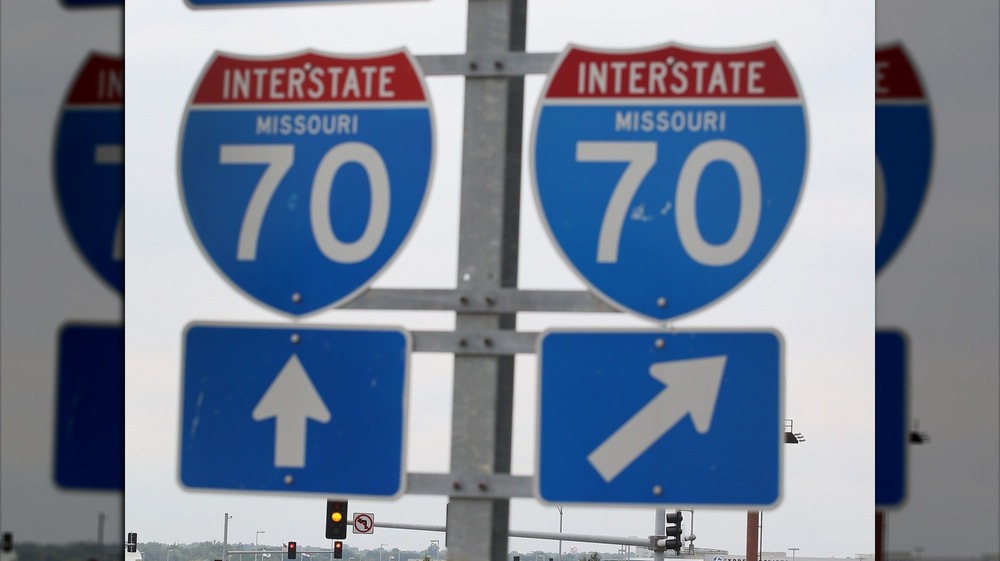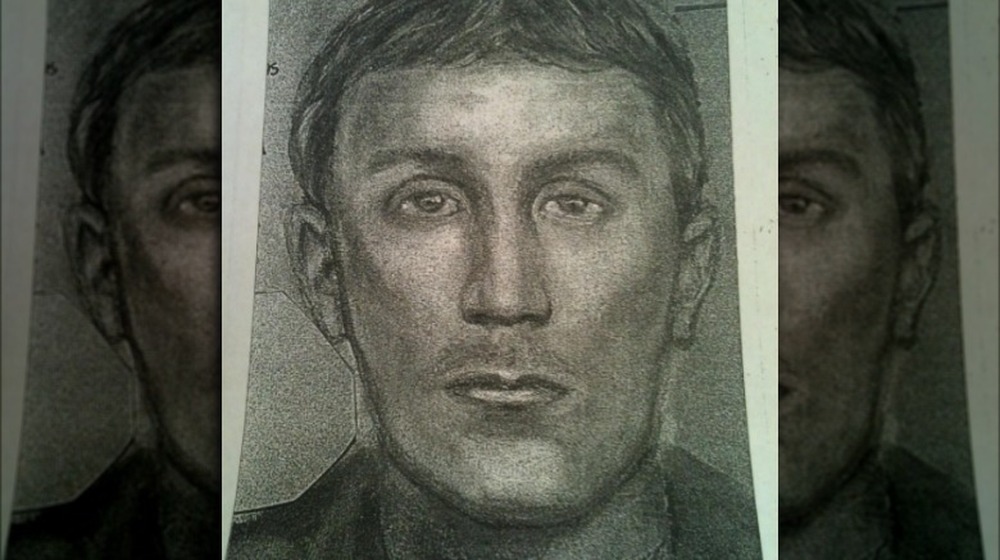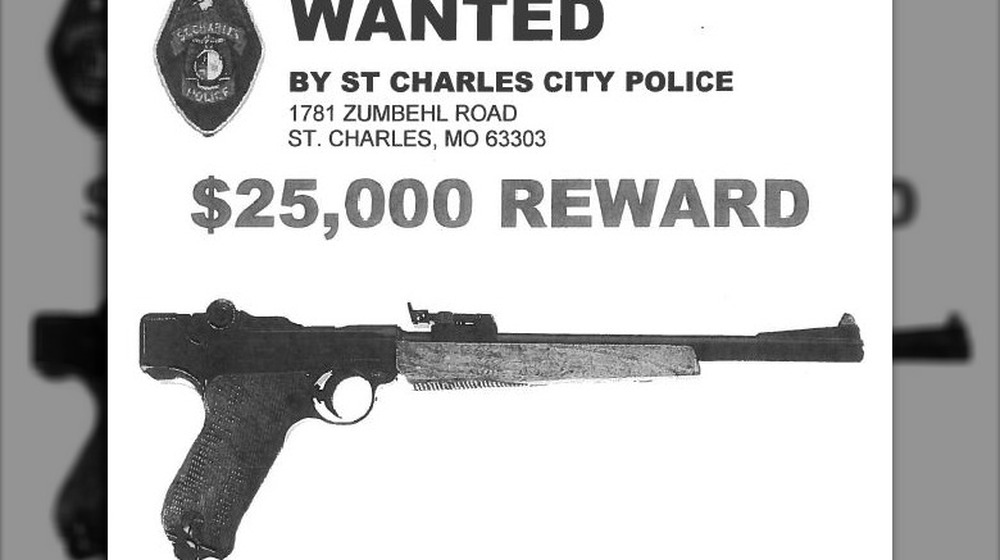The Untold Truth Of The I-70 Killer
Serial killers usually get their monikers from one of two places: Either from the method they use to kill, or from the hunting grounds where they stalk their human prey. It's pretty obvious where the I-70 Killer got theirs. Interstate 70 is a long east-west freeway that links several states between Baltimore, Maryland, and Cove Fort, Utah. Though, this serial killer tended to operate more specifically between Indianapolis and Wichita during the months of April and May 1992, according to The Wichita Eagle.
In total, the I-70 Killer is thought to have murdered six victims throughout their short run, using close, precise, execution-like shots to the back of the head. No one knows whether the killer was imprisoned for a different crime, died, or mysteriously went quiet, but they fell off the map as quickly as their murder spree began — a very atypical behavior among serial killers, especially since no motive has ever been attributed to his crimes besides the obvious desire to end lives. Many killers of this nature tend to kill until some brave soul stops them.
This case differs from other serial killer cases. For one thing, there's the speed at which it went cold, with authorities running out of leads nearly from the beginning. That is, until a key piece of information was identified in 2012, revitalizing the search for the mysterious I-70 serial killer and bringing new interest to the story surrounding his murders.
One of the victims had worse luck than the others
Having to restructure her night on April 8, 1992 after her co-worker had called off her shift, 26-year-old Robin Fuldauer headed into the local Indianapolis Payless ShoeSource store. It was an annoyance, a small stroke of bad luck, she'd faced several times through the course of her job. The store had few part-time employees and only two full-timers, of which Fuldauer was one, according to Courier & Press. With limited staff, it looked like she was on her own yet again that night, but what could possibly go wrong in a simple chain store selling inexpensive shoes?
The question was answered in the early afternoon when an unknown man ushered her into the back room and put a .22 caliber bullet in the back of her skull. Her body would lay there, dead, while some people helped themselves to free shoes, thinking the store was unattended, until she was found later that day.
Adding to the personal bad luck of this victim was the store's lack of security measures. According to the True Crime Garage podcast, the Payless shoe store Fuldauer worked in had practically nothing to prevent attacks or robberies, and even less that investigators could use to catch perpetrators after the fact. No security cameras, no alarm systems, nothing. The sole "security" measure, if indeed it could be considered that, was a buzzer that went off when the front door was opened, letting workers know someone had entered the store.
Specifically targeted working women
As if working retail isn't an awful enough experience when conditions are perfect, the I-70 Killer made the job terrifying and deadly. Even if you weren't one of his victims, being within a 15-minute drive from I-70 left you with a nagging paranoia that whispered how you might be next. Shops across the country, according to the True Crime Garage podcast, were warned repeatedly about the danger of working near any major highway or interstate with this killer on the loose, because they targeted women working behind the counter.
Fuldauer had been the lone working employee of Payless ShoeSource only miles from the I-70 in Indiana, and Fuldauer was only the first of six killings to take place along the road. According to the timeline laid out by the St. Charles City Crime Stoppers, the others occurred in strikingly similar situations. Patricia Magers and Patricia Smith were killed three days after Fuldauer in a bridal shop in Wichita. Later that month, Michael McCown was gunned down in his Terre Haute, Indiana, ceramics store. In May, Nancy Kitzmiller was executed in a shoe store while Sarah Blessing was murdered in her gift shop. Both killings happened in different Missouri towns.
When you see the killings mapped out, which can be viewed here at My Wabash Valley, it's clear which road they follow, and the locations and nature of the victims spells out a clear modus operandi. So, why was there a Michael thrown into the mix?
Might have killed a man by mistake
The murder of Michael McCown followed the killer's MO to a T, minus the fact that this victim was of a different gender than the rest of the victims. McCown, like the others, was going about a normal work day with no inclination it would be his last. He'd been stocking the shelves, making sure everything was prime for any customers who walked through the door, when he, too, was shot in the back of his head and killed. He was 40 years old. Being the only known male victim of the I-70 Killer makes McCown's murder read like a fluke, and as far as authorities are concerned, it probably was.
This murder seems to be a case of mistaken identity, according to My Wabash Valley, but exactly how this victim was accidentally chosen is up for debate. McCown had long hair at the time of his death, and many investigators and news outlets, such as KMOV St. Louis, believe the killer identified the victim as a woman (from behind) because of it.
McCown's sister adamantly disagrees. Alternatively, she believes the killer came into Sylvia's Ceramics believing it was owned and operated by a woman, when in actuality, it was named after McCown's mother. Since the killer was likely hellbent on getting another murder under their belt, gender went out the window. McCown was the only possible victim, and his death would have to suffice.
Few witnesses and no known suspects
The early '90s weren't exactly famous for their surveillance technology. Not that the smaller shops off I-70 were likely to have state-of-the-art CCTV setups in the first place. This killer's ability to keep their face off film isn't really surprising. What is surprising, however, is even though they committed murder in public stores, very few witnesses have come forward.
You can see the files containing thousands of names investigators had believed at one time or another to be connected with the I-70 killings on KMOV St. Louis's piece about the case, but there have yet to be any solid suspects. The lack of useful witness testimony hasn't helped, but there's been enough to give authorities an idea of the face they're looking for.
Directly following the killings of the Patricias at La Bridal in Wichita, the murderer ran into an unforeseen bump in the road. The victims had kept the shop open late, as noted by Courier & Press, because a customer desperately needed to pick up a cummerbund after hours. That customer walked up to the front doors as the killer was walking out. They exchanged some words while the killer attempted to lure the customer into the back room, but the man knew something was off and fled the scene. This customer's testimony later allowed investigators to produce a composite sketch, the only known image of the killer.
A specific murder weapon could crack the case
Police believe the weapon used in the killings was a pistol firing a .22 caliber long rifle bullet. This ammo is cheap and available everywhere. Many gun enthusiasts use it to plink targets at the range or get rid of varmints, but the firearm used in the I-70 murders was special. According to St. Louis Post-Dispatch, authorities announced in 2012 they believed the weapon was specifically a semi-automatic Erma Werke ET-22, a weapon you're not likely to encounter at your local gun show.
As KMOV St. Louis points out, this gun is exceedingly rare and has some attributes that make it easy to identify. The piece is a replica of an old German war pistol historically used by that country's navy. The barrel is two or three times longer than most handguns — so long, in fact, it has a foregrip to help steady the shot. IT's an odd choice. For using such a small caliber bullet, this firearm wouldn't be as easy to conceal as most.
The murder weapon, due to its uniqueness, could provide a major break in the case and lead authorities to the killer, but it has to be found first. As of 2016, the St. Charles City Police Department is offering a $25,000 reward for the missing weapon, so if you know anything, it could be your chance to help put a killer behind bars.





